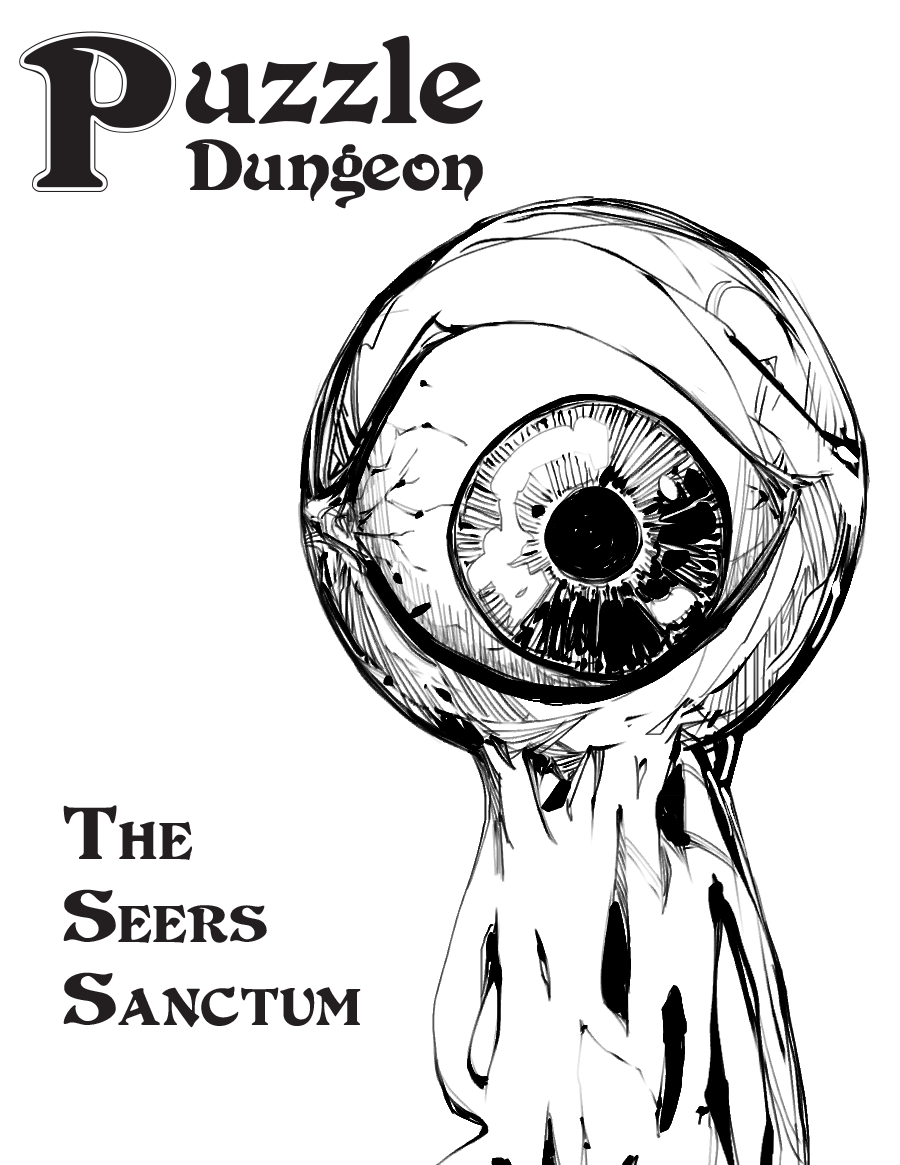Puzzle Dungeon: The Seers Sanctum is a definitely interesting OSR dungeon adventure. It was originally launched during ZineQuest3, and is currently available at DriveThruRPG.
- Original theme. Being original is not a strict requirement for me, but having a dungeon which is not just yet another crypt filled with undead, or cave with a bunch of orcs, is definitely good.
- Interactive environment. Each and everyone of the 10 rooms offers a "puzzle". These are not actual puzzles as much as environments that the players can examine and interact with in a series of meaningful ways, and this is definitely good. There's a hand mirror that allows to see how the place was in the past, allowing for a lot of investigation. And the general theme of sight is carried on consistently through the place, meaning that players should reasonably figure out how to circumvent traps and reveal secret passages and hidden things.
- Non-necessary fights. The whole dungeon only host 4 rooms with a single creature encounter and one room with 2d4 creatures. The cool thing is none of them, except perhaps the grey ooze in the first room, is a necessary fight. The 2d4 floating eyeballs don't attack by default, and can be tricked in several ways. There's a medusa whose objective is to leave the dungeon, and a gelatinous cube that first appears trapped inside a pool, and so on.
- Great formatting. The text organization and layout are excellent and make preparation and running the adventure very easy.
- Some unclear points. The text and formatting is, in general, excellent, but I've found a few odd bits. The iron doors in room 2 are described as "no handles, no hinges, locked" and that's it. Perhaps a paragraph is missing? Anyway, before running the scenario the GM must decide how to handle those doors. Personally, I would just treat them like the similar door found in room 1.
- Treasure. There is a very cool magic item (a stick that can be used like a periscope), but the treasure in the treasure room is barely described ("coins, gems, golden monkeys") and the GM must decide the actual value. Being the only monetary treasure, I would go for something like 1d3 x 1,000gp worth of coins, and two more rolls for the gems and the monkey statues.
- Treasure, again. The deepest room has a medusa trapped inside. She only wants to be free again, so unless the players mess with her, The problem I see is that getting to her room requires some effort and clever thinking, so I would rather put some treasure here: jewels, jars with precious oils, something like that, for another 1d3 x 1,000gp at least.
- Room 8 has the "final puzzle", a planar travel device which the group might figure out how to use (finding it is one of the possible reasons to enter the dungeon, as per the provided hooks). It IS cool, of course, but I would keep it as it is only if I'm ready to have the player characters hop into other planes. Should I run this dungeon (which I definitely would like to), I think I'll change the device in someway, if I play it as part of a larger campaign.












